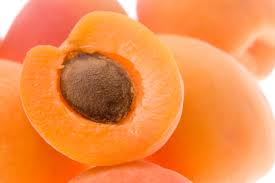Armenia: Armenia Agriculture Profile 2012
2012/02/15
Armenia Agriculture Profile 2012
Reference Date: 25-May-2011
|
FOOD SECURITY SNAPSHOT
|
Cereal crop prospects improved
Weather conditions were not favourable for the 2011 winter cereal crops due to below-average precipitations from the beginning of the season in October until early March. The analyses of remote sensing data indicated that soil moisture was generally below normal levels. Rainfall increased during March-April 2011 benefiting the growing of winter crops, as well as planting and early development of spring crops. The area planted to cereals is estimated to be slightly lower than last year, but production is forecast to increase to a level of 345 000 tonnes reflecting expected higher yields following Government production support through seed supply this season.
Heavy dependency on cereal imports
The country is heavily dependent on cereal imports, mainly wheat. It is estimated that domestic production covers about half of the country’s cereal consumption requirements. In the 2010/11 marketing year, imports were sourced from Hungary, Ukraine and Kazakhstan. Due to both higher transportation costs and higher international prices, the price of imported wheat per tonne increased from USD 170 in June 2010 to USD 380 in January 2011.
Higher food prices negatively impact vulnerable groups raising food security concerns
Prices of bread (high grade flour) in April 2011 were 14.5 percent higher than in April 2010. Prices of wheat flour (high grade) and wheat flour (first grade) in April 2011 were 26 and 28 percent higher respectively than a year earlier. About one-third of the population is estimated to be poor and higher food prices undermined their access to food. There is concern about the food security of these populations.
The food situation of vulnerable groups of the population is critical. According to official statistics 34.1percent of the population in 2009 was considered poor.
 Agriculture is carried on mainly in the irrigated lowland valleys, such as the Aras River Valley. The production of crops is greatly benefited from the fertile black topsoils better known as chernozem soils, that are found in many areas of Armenia. Cereals, fruits, cotton, sugar beets, tobacco, apricots, quinces, wheat, walnuts, wine grapes and potatoes are grown in large amounts. The raising of livestock, particularly sheep and cattle, is widespread, especially on the mountain slopes.
Agriculture is carried on mainly in the irrigated lowland valleys, such as the Aras River Valley. The production of crops is greatly benefited from the fertile black topsoils better known as chernozem soils, that are found in many areas of Armenia. Cereals, fruits, cotton, sugar beets, tobacco, apricots, quinces, wheat, walnuts, wine grapes and potatoes are grown in large amounts. The raising of livestock, particularly sheep and cattle, is widespread, especially on the mountain slopes.
Armenia has 2.1 million hectares of agricultural land, 72% of the country's land area. Most of this, however, is mountain pastures, and cultivable land is 480,000 hectares (452,900 hectares arable land, 27,300 hectares in orchards and vineyards), or 16% of the country's area.[1] In 2006, 46% of the work force was employed in agriculture (up from 26% in 1991), and agriculture contributed 21% of the country's GDP. In 1991 Armenia imported about 65 percent of its food.
In 1990 Armenia became the first Soviet republic to pass a land privatization law, and from that time Armenian farmland shifted into the private sector at a faster rate than in any other republic. However, the rapidity and disorganization of land reallocation led to disputes and dissatisfaction among the peasants receiving land. Especially problematic were allocation of water rights and distribution of basic materials and equipment. Related enterprises such as food processing and hothouse operations often remained in state hands, reducing the advantages of private landholding.
Swift and decisive privatization quickly eliminated the collective and state farms, which had dominated Armenian agriculture in the Soviet period. Already by 1992 privatization of the state and collective farms had put 63% of cultivated fields, 80% of orchards, and 91% of vineyards in the hands of family farmers.[2] In 2006, family farmers were producing 98% of gross agricultural output, i.e., in 15 years Armenian agriculture transformed completely from the traditional Soviet model of large agricultural enterprises to the market-oriented model of individual or family farms.
The privatization program yielded an immediate 15% increase in gross agricultural output between 1990 and 1991. Agricultural growth continued unabated, and by 2006 gross agricultural output had increased by 75% compared with its level in 1990. This growth record has not been matched by any of the CIS countries, putting Armenia in a unique position of stellar agricultural performer in CIS. In 1993 the government ended restrictions on the transfer of private land, a step expected to increase substantially the average size (and hence the efficiency) of private plots. At the end of 1993, an estimated 300,000 small farms (one to five hectares) were operating. In that year, harvests were bountiful despite the high cost of input; only the disastrous state of Armenia's transportation infrastructure prevented relief of food shortages in urban centers.
Agriculture is carried out mainly in the valleys and mountainsides of Armenia's uneven terrain, with the highest mountain pastures used for livestock grazing. Fertile volcanic soil allows cultivation of wheat and barley as well as pasturage for sheep, goats, and horses.[2] With the help of irrigation, figs, pomegranates, apricots, and olives also are grown in the limited subtropical Aras River valley and in the valleys north of Yerevan, where the richest farmland is found.[2] Armenia also produces peaches, walnuts, and quince, and its cognac enjoys a worldwide reputation.
 Irrigation is required by most crops, and the building of canals and a system of irrigation was among the first major state projects of the Soviet republic in the 1920s. By the 1960s, arable land had been extended by 20 percent, compared with pre-Soviet times. Most farms had electricity by the early 1960s, and machinery was commonplace. In the Soviet era, women made up most of the agricultural work force; a large percentage of the younger men had responded to the Soviet industrialization campaign by migrating to urban centers. In 1989 farms were operating about 13,400 tractors and 1,900 combines. Unlike other CIS countries, Armenia did not suffer a catastrophic decline in its farm machinery inventory during the privatization, and in 2006 there were 14,600 tractors and 1,700 combines in Armenian farms.
Irrigation is required by most crops, and the building of canals and a system of irrigation was among the first major state projects of the Soviet republic in the 1920s. By the 1960s, arable land had been extended by 20 percent, compared with pre-Soviet times. Most farms had electricity by the early 1960s, and machinery was commonplace. In the Soviet era, women made up most of the agricultural work force; a large percentage of the younger men had responded to the Soviet industrialization campaign by migrating to urban centers. In 1989 farms were operating about 13,400 tractors and 1,900 combines. Unlike other CIS countries, Armenia did not suffer a catastrophic decline in its farm machinery inventory during the privatization, and in 2006 there were 14,600 tractors and 1,700 combines in Armenian farms.
Agricultural production
 Agricultural production is heavily biased toward crops, which in 2006 accounted for 64% of gross agricultural output. The principal agricultural products are grains (mostly wheat and barley), potatoes, vegetables, grapes (both table and wine), and fruits. In 2006, Armenia produced 212,500 tons of grain, 539,500 tons of potatoes, 915,000 tons of vegetables and melons, 286,000 tons of fruits, and 201,400 tons of grapes. All these numbers (except for grain) constitute significant increases compared with 1989, when Armenia produced 200,000 tons of grain, 266,000 tons of potatoes, 485,000 tons of vegetables, 170,000 tons of fruit, and 119,000 tons of grapes. Livestock production in 2006 reached 66,800 tons of meat (slaughter weight), 620,000 tons of milk, and 464 million eggs. The corresponding livestock production numbers in 1989 were 105,000 tons of meat, 491,000 tons of milk, and 561,000 tons of eggs, i.e., only milk production increased significantly during the post-Soviet period
Agricultural production is heavily biased toward crops, which in 2006 accounted for 64% of gross agricultural output. The principal agricultural products are grains (mostly wheat and barley), potatoes, vegetables, grapes (both table and wine), and fruits. In 2006, Armenia produced 212,500 tons of grain, 539,500 tons of potatoes, 915,000 tons of vegetables and melons, 286,000 tons of fruits, and 201,400 tons of grapes. All these numbers (except for grain) constitute significant increases compared with 1989, when Armenia produced 200,000 tons of grain, 266,000 tons of potatoes, 485,000 tons of vegetables, 170,000 tons of fruit, and 119,000 tons of grapes. Livestock production in 2006 reached 66,800 tons of meat (slaughter weight), 620,000 tons of milk, and 464 million eggs. The corresponding livestock production numbers in 1989 were 105,000 tons of meat, 491,000 tons of milk, and 561,000 tons of eggs, i.e., only milk production increased significantly during the post-Soviet period
- Armenia News
-
- AFGHANISTAN: The newly created Eurasian Economic Union (EEU) has shortly got the momentum
- ARMENIA: 2015 Euro-Asia Economic Forum in Xi'an,
- ARMENIA: EU-funded project: round table on ethics and disciplinary issues in Georgian Bar Association
- ALBANIA: TAP starts construction of access roads, bridges in Albania
- AFGHANISTAN: Revised IMF forecasts signal gloom on global economic outlook
- AFGHANISTAN: Oxfam Study Finds Richest 1% Is Likely to Control Half of Global Wealth by 2016
- Trending Articles
-
- FRANCE: Cavendish doing it for Africa
- CONGO BRAZZAVILLE: Congo: Total abandons oil field citing decrease in global oil prices
- SOUTH AFRICA: South Africa’s Biggest Labor Group to Balance Pay With Job Security
- EUROPEAN UNION: EU meets without Britain for first time since Brexit vote
- NIGERIA: Lagos hosts 2016 Africa fashion week Nigeria
- KENYA: Nairobi to host 14th UN conference on trade and development








